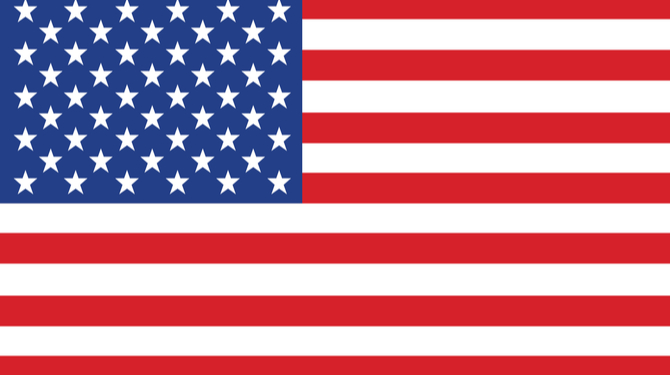
United States
Fashion Law
This chapter is from the first edition of the Law Over Borders Fashion Law guide. To read the fully updated chapter from the latest edition click here.
Introduction
The US fashion industry is comprised of a chain of highly valued fashion designers, manufacturers, suppliers/vendors, marketers and retailers, producing a wealth of high-end, moderate and basic products sold around the world. While the industry has traditionally been based on seasons and trends, recent advances in technology has helped propel the industry to new creative fetes, making lawyers who can keep up, not only with changing trends, but constantly changing innovation, essential. The concept of fashion law in the US is not always straightforward or easy to protect: it requires creativity and incorporates various legal disciplines, including intellectual property, advertising and marketing, contract, corporate, commercial sales, real estate, employment and international trade and customs laws. A true expert in fashion law will have a deep understanding of the industry and these concepts, but more importantly must come prepared with novel and innovative ideas for protection.
1 . What are the main intellectual property legal tools available to protect fashion products?
While there is no stand-alone protection for designs, trademarks, copyrights and patents in the US, Intellectual Property Rights (IPRs) are protected through a complex and multifaceted system which, if utilized effectively, provide strong protection.
1.1. Trademarks and non-traditional trademarks
A trademark is a brand name, logo, style name or other source-identifying feature of a brand or design (15 U.S.C. § 1051 et seq. (the federal Trademark Act or “Lanham Act”)). Trade dress, a type of trademark, is source-identifying packaging or product design. Trademarks and trade dress are part of fashion companies’ most important assets. They allow a business to distinguish its goods from others. A strong trademark may, in a single word, symbol or design, convey a wide range of attributes about a product to consumers. For example, when consumers see the famous “LV” monogram on a handbag, they immediately recognize a Louis Vuitton product and can quickly make a reasonably informed decision about whether to purchase it.
Unlike other IPRs, trademark rights last indefinitely, so long as they are being used. Protection attaches as soon as the mark is used in commerce, even if the mark has not been registered, although the rights are limited in scope without registration. Federal registration provides the strongest protection.
Several types of trademarks are relevant to fashion, as follows.
House marks identify the provider of a wide variety of goods, such as KATE SPADE. When federally registering a house mark, this intention must be expressly indicated in the application, and examples of use as a house mark and indication of the goods encompassed must be included.
Product styles range from names of specific fashion lines, products, design elements or sub-brands. Companies should weigh the benefits of registering each of these, and remember to clear all of them regardless.
Personal names are often used to identify brands, such as TORY BURCH. Before surnames can be registered, they must achieve acquired distinctiveness, that is, be recognized by consumers as source identifying to the business. Use of personal names for a brand may later impair designers’ abilities to use their names in connection with separate ventures. Clear contractual terms are essential. Several disputes regarding personal name use have occurred (see, for example, Gucci v. Gucci Shops, Inc., 688 F. Supp. 916 (S.D.N.Y. 1988) and JA Apparel Corp. v. Joseph Abboud, 568 F.3d 390 (2d Cir. 2009)).
Foreign names are often used as brand identifiers. To register these, companies must ensure that the translation (as well as the mark itself) does not conflict with other already existing marks and/or that it is not equivalent to a generic term in the foreign country.
Domain names may be secured from various domain name registrars and may even be registered as trademarks if they function to identify a particular source of goods or services offered. (See United States Patent & Trademark Office v. Booking.com BV, 591 U.S. ___ (2020).) Even if not registered as a trademark, use of a domain name that is confusingly similar to another registered trademark (regardless of whether it is in the form of a domain) may be an infringement.
Trade dress is particularly important because it is one of the few mechanisms to protect overall appearance of designs and packaging. It protects unique design elements, such as color, shape and patterns, including Louboutin’s red-soled heels, Burberry’s plaid and Hermés’ H-shaped fixtures.

Trade dress must be non-functional and distinctive. For product design, acquired distinctiveness is necessary. Relevant evidence may include unsolicited media coverage, advertising examples, sales/advertising figures and consumer surveys. Proving acquired distinctiveness can be challenging and resource consuming. For example, in MZWallace v. Fuller, MZWallace failed to demonstrate that its quilting pattern on handbags qualified for protection because (despite having millions of dollars in sales/advertising spend and numerous publications mentioning the handbags) it lacked acquired distinctiveness.
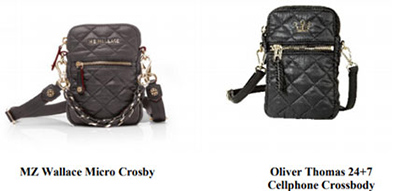
(MZ Wallace Inc. v. Fuller, 18-02265, 2018 WL 6715489 at *10-11 (S.D.N.Y. Dec. 21, 2018).)
Trademark monitoring and enforcement is critical. Federal causes of action include infringement, dilution and counterfeiting. Infringement occurs when there exists a likelihood of confusion between marks. Dilution occurs when a famous mark is used in a manner that weakens its uniqueness through “blurring” or “tarnishing” the reputation of the trademark’s source. Counterfeiting occurs through use of an identical or substantially indistinguishable trademark in a spurious manner (i.e., fake goods). Enhanced damages are available for counterfeiting and willful infringement and dilution.
Fashion brands should be aware that, even when a mark is registered, creative expression, including expressive content, art and parody, may impact the ability to enforce. (See Nike v. MSCHF, 21-1679 (E.D.N.Y. Mar. 29, 2021) (right to free speech “paramount” in case where Nike sought to prevent shipments of “Satan Shoes”).)
1.2. Design as an alternative or addition to TM registration
Despite various pieces of design piracy legislation having been proposed and/or introduced, the US currently provides no separate design rights to protect fashion. As a result, designs that do not qualify for traditional IPR protection (for instance, if they are not source identifying or if they are functional or useful) may not be entitled to protection.
1.3. Copyright as an alternative or addition to TM registration
Copyrights are another important tool to protect fashion, but because they do not protect “useful articles,” the protection is limited to certain fashion elements (17 U.S.C. § 101 et seq. (The Copyright Act)). Under this rubric, mechanical, functional, or utilitarian characteristics of an object (including shape, contours, dimensions, specific cuts) are not protected, but original features that can be separated and exist independently may be. Examples of protectable elements include fabric prints, images placed on clothing, embroidery, lace and sculpted features (e.g., unique buckles). Copyright protection typically lasts for the life of the author plus 70 years; for anonymous or pseudonymous works, or works made for hire, 95 years from first publication or 120 years from creation, whichever expires first.
Copyrights are available only if the work was independently created and original, i.e., possesses a minimal degree of creativity (a low threshold). Even where the independent elements of a design are not sufficiently original, the specific arrangement or combination of elements may merit protection, such as the way silver and gold are twisted together with stones or other elements on a bracelet or the unique combinations of lace patterns.
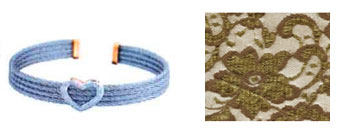
See, for example, A’lor International, Ltd. v. Tappers Fine Jewelry, Inc., 12-02215 (C.D. Cal. 2012) and Malibu Textiles, Inc. v. Label Lane International, Inc., No. 17-55983 (9th Cir. 2019).
Copyright protects only fixed expression, not underlying ideas; if the idea itself can only be cognizably expressed in one way, that expression is unprotected.
Enforcement typically occurs in federal court, although by mid-2022 copyright owners will have the option of going to a Copyright Claims Board for smaller matters. Infringement occurs when a valid copyright has been copied. The exact test for infringement varies by jurisdiction so it is important to research the law. Copyrights may be registered at any time, but registration is a prerequisite for enforcing in federal court. Statutory damages are available if an owner registers its work either within three months of publication or before the infringement occurs. This is an important benefit because actual damages (both in the copyright and trademark context) can be very difficult to prove. Damages are enhanced for willful infringement.
Fashion companies need to pay attention to copyright ownership issues. Where a work is prepared by two or more authors with the intent to collaborate, a joint work is created. Joint owners cannot sue each other for infringement and cannot grant an exclusive license to the work but are otherwise free to use the work as they please. When an employee within the scope of her employment creates an original work, the work is considered a “work made for hire” and the employer is the “author” of the work. But when a contractor creates the work, without a special agreement stating otherwise, the contractor is the author and owner.
1.4. Any other pertinent IP rights?
Patents. US fashion companies are increasingly turning to patents as an alternative and additional means of protection (35 U.S.C. § 101 et seq. (The Patent Act)). The same product or design can be simultaneously protected by multiple patents, trademarks and copyrights.
Utility patents protect underlying inventions – the way something is used or works. Fashion examples include innovative fabrics or processes, such as for manufacturing, securing/fastening or “slenderizing” appearances. For instance, Nike, Inc. owns a utility patent for a self-lacing shoe system and various shapewear companies own utility patents for garments that help “shape” the fit of clothes. Protection lasts for 20 years from date of patent application filing.
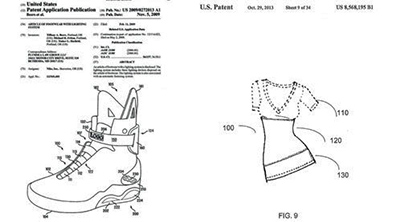
Design patents, which are generally less expensive and easier to obtain than utility patents, protect the ornamental design (i.e. look and feel) of an article of manufacture. Similar to utility patents, a patented design must be novel or a non-obvious modification of prior art. For example, bridal designer Jenny Yoo owns two design patents for the particular design of bridesmaid dresses and Crocs, Inc. owns several patents protecting the ornamental designs of its shoes. Protection lasts for 15 years after the patent grant date.
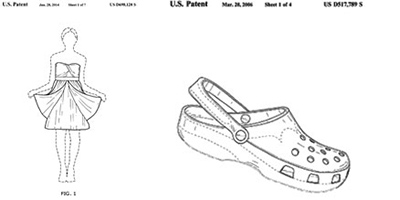
Patents are primarily enforced through infringement actions in federal court. Infringement occurs when a party makes, uses, offers to sell, sells or imports the patented invention or design without authority. Accused infringers often defend against infringement claims by alleging non-infringement, trying to limit the scope of the patent based on prior art, or seeking to invalidate the patent. Invalidation is a fact-specific inquiry and accomplished only by proving a specific defect, such as lack of novelty, obviousness, disclosure more than a year prior to patenting, or, for design patents, functionality.
2 . Beyond intellectual property: what contractual arrangements are useful in manufacturing, distributing and advertising fashion products?
2.1. Manufacturing fashion products
License agreements and Non-Disclosure Agreements (NDAs). Licensing agreements allow for use of another’s infrastructure and resources to produce products. They may involve different services, such as design, sourcing or production. Contracts are governed under state law according to standard contractual interpretation principles. Companies should pay close attention to choice of law provisions and, above all, ensure the terms of the agreements are clear and unambiguous.
Key provisions, among other terms, include the scope of the license; term and termination; compensation; buy-out rights and rights of first refusal/negotiation; representations and warranties; and indemnification and insurance. The agreements should carefully set out the production process and quality controls, including roles and responsibilities of each party involved; approval rights; any expected collaboration; and rights to leftover goods/ materials to prevent counterfeits. Terms governing the licensee’s code of conduct are also important, such as compliance with best industry practices for manufacturing and laws and regulations impacting labor, employment, non-discrimination, health, safety and environment.
IPR clearance remains critical. In Gucci v. Guess, Guess was ultimately found liable for trademark infringement related to designs created and manufactured by Marc Fisher Footwear under a license (Gucci America, Inc. v. Guess?, Inc., 843 F. Supp. 2d 412 (S.D.N.Y. 2012)). Stronger clearance processes required throughout the pendency of the license – and by Guess itself – may have changed this result.
Supply contracts and/or individual purchase orders with vendors for materials are also essential. They are generally governed by state law, including the Uniform Commercial Code (discussed below). Companies sourcing goods internationally must be familiar with international law on commercial sales, such as the UN Convention of Contracts for the International Sale of Goods, as well as with import and customs issues.
Standard terms include product description; pricing and payments; delivery and shipping; quality controls and inspection rights; workplace standards; ownership of IP; seller warranties; governing law and dispute resolution. Like with licensing, vendor compliance with all applicable laws is essential to avoiding later liability. For instance, the California Safe Drinking Water and Toxic Enforcement Act requires businesses in California to provide notification of cancer- or reproductive toxicity-causing chemicals in products sold, so vendors must provide requisite notice if applicable.
Non-Disclosure Agreements (NDAs) protect disclosure of confidential information. They should unambiguously specify which parties are bound; the information to remain confidential (especially IPRs like patterns, designs, sketches, samples and business information like branding, marketing and business plans, financial information, customer lists, creative processes and other know-how and/or trade secrets); all ways the protected information may be used; and steps to prevent and remedy accidental disclosure. Some manufacturers may be reluctant to take on the liability of an NDA if they produce items for several different brands; mutual NDAs may help alleviate the concern.
Subcontract agreements. Fashion companies should clearly set out in their contracts when and under what terms subcontracting is permissible. Many fashion companies require approval rights over the selection of subcontractors. Provisions governing ownership of all IPRs created are particularly important in these agreements. For instance, subcontracting arrangements are not automatically classified as work for hire and may mean the subcontractor owns any copyrightable works created.
2.2. Distributing fashion products
License Agreements & Selective Distribution. Fashion companies should be aware of specific considerations for licensing in the sales and retail context. Brands may choose to control their reputation and exclusivity by preventing licensees from selling through certain distribution channels, such as discount stores or on the Internet. Failure to include clear terms specifying permitted retailers or categories of retailers, pre-approvals for retailers and/or limitations on where a distributor may sell and ship may lead to litigation. For example, Calvin Klein sued to terminate a licensing agreement with Warnaco after learning that its jeans were for sale in discount retailer Costco, alleging breach of contract, trademark infringement and dilution. Warnaco countersued for breach of contract, and the high-profile litigation settled only on the eve of trial (Calvin Klein Trademark Trust v. Wachner, No. 00-4052 (SDNY 2000)).
Other distribution provisions to consider include clauses that set out specific territories for sales (and prevent gray market goods); locations of retail stores; guidelines for store design and staffing; management of excess inventory; product recall rights; and advertising and marketing requirements and approvals.
Sales Contracts. Commercial sales are generally based on the exchange of purchase orders (“POs”), seller confirmations and invoices, which each may contain a series of terms and conditions. POs, in particular, are often made subject to additional legal terms, either in a separate document or by referencing separate “vendor standards” or “vendor compliance materials”. Fashion companies must look at these documents closely to ensure they do not include unfavorable terms.
The written documents exchanged will generally act as the contractual arrangement. To the extent there is no writing or the writings are silent on specific terms, courts will ultimately interpret the agreement according to state law. The UCC, as adopted by the specific states, will provide a framework for interpreting the arrangement and default rules. For instance, if mark down allowance provisions (which allow retailers to discount or return products that fail to sell) are not set out in the PO or other documents, courts will look at course of dealing and performance and usage of trade to determine what is reasonable.
Chargebacks – the ability to later deduct costs if goods are delivered damaged – has been an area ripe for dispute if not clearly articulated in writing. One dispute involved Atateks, a group of foreign manufacturers, and Private Label Sourcing, a purchasing agent for Target, which purchased garments from Atateks for resale to Target, using POs as contracts. The relationship between the parties eventually broke down, and Atateks refused to accept Private Label’s chargebacks. The court ultimately determined that the POs and the parties’ ordinary course of business obligated Atateks to accept some of the chargebacks, but, because there was no explicit master contract setting out the terms, the court had to analyze each type of disputed chargeback individually, highlighting the importance of express and unambiguous contract terms. (Atateks Foreign Trade, LTD v. Private Label Sourcing, LLC, No. 07-CV-6665 (HB), 2009 WL 1803458 (S.D.N.Y. June 23, 2009).)
Consignment Agreements. Consignment is a unique arrangement allowing brands to maintain ownership over products while granting retailers the right to display and sell those products for a set period. Such agreements should clearly define the term of the agreement, the percent of revenue each party receives upon sale, distribution of liability for lost or damaged goods, and the effects of non-sale, among other terms.
There have been several recent litigations highlighting the need for brands to pay particular attention to how their IPRs are being used in consignment arrangements, particularly in the luxury e-commerce resale markets. For instance, in the Chanel v. TheRealReal litigation, Chanel alleged that TheRealReal, an online marketplace selling second-hand luxury goods consigned from their owners, was selling counterfeit Chanel bags. The Court, in refusing to dismiss the complaint, held that TheRealReal could potentially be liable for direct trademark infringement because it approves the products before they are listed, exercises control over pricing and marketing and takes physical possession of the goods (Chanel Inc. v. TheRealReal Inc., 1:18-cv-10626 (S.D.N.Y. March 30, 2020)).
Co-branding and co-marketing. Fashion collaborations are increasingly common, necessitating the need for governing agreements. Brands should expressly identify the relevant IPRs to be used, as well as parties’ respective rights to use the IPRs of the other. For blended marks (combining aspects of both brands), the permitted uses by each brand should be clarified to avoid confusion, including where it may appear and through what channels, e.g., websites, social media, domain names, hashtags, and marketing campaigns. Brands should also set clear durations for use and termination rights, including whether remaining inventory may be retained or used outside of the collaboration period.
2.3. Advertising fashion products
Advertising agreements can take many forms, including agreements with advertising agencies; photographers, artists and content providers; and production companies. Like other US contracts, advertising agreements are governed by state law and should be put into writing and executed.
Licenses are necessary for use of all content in advertising that the fashion company does not own, such as music, props, locations and images. If such rights cannot be secured, brands can work to retouch third party IPRs from the advertising campaigns before they are released. Brands and agencies should carefully set out who is responsible for clearing and retouching these rights. Even if these responsibilities contractually fall within the responsibility of an outside agency, fashion brands still face potential reputational risk, so it is best for brands to conduct their own reviews to ensure necessary licenses, permissions and releases are in place.
Ownership of all advertising should be specified, including whether photographers, artists and other content creators retain any rights in the content (e.g., for use in a professional portfolio). If more than one party has a right to use the underlying content, the parties should set specific parameters, for example, restrictions on the timing and placement of use to avoid premature leaks.
Employing fashion models. Written agreements with fashion models (or other talent) appearing in advertising are necessary in light of state Right of Publicity laws, which require permission to use an individual’s name, image, likeness, voice, or persona (see for example, NY Civ. Rights Law §§ 50-51; Cal. Civ. Code § 3344). The laws vary by state, with some – such as California – being much more expansive than others. The location in which the talent resides or is domiciled (or, in the case of deceased talent, died) will generally govern what state law applies, with exception for the few states that provide broader rights regardless of location.
Specific termination and warranty provisions protect fashion companies that rely on models in advertising. Morality clauses protect a brand’s image in the case the talent publicly behaves in a way that may harm the companies’ reputation by providing a termination right. Talent may protect themselves by requiring other provisions, such as “pay or play” terms that will ensure payment even in the event the company decides not to use advertising in which the talent was supposed to appear.
Model agreements must also take into account labor laws, particularly when minors are involved. Some states, such as New York, require permits before engaging minors, as well as regular breaks, the presence of chaperones, tutors, or the provision of trust accounts for earnings. (See Employment and Education of Child Performers, N.Y. Lab. Law §§ 150–54-a (McKinney 2021); N.Y. Comp. Codes R. & Regs. tit. 12, § 186 (2021); S.B. 5486, 2013 Leg., Reg. Sess. (N.Y. 2013) (amending N.Y. labor law and N.Y. arts and cultural affairs law to govern runway and print models.) Representations and warranties should be obtained from all talent regarding their age and appropriate documentation. When contracting with a minor, the parent or guardian should be the signatory.
Unions and collective bargaining agreements may also impact wage and working conditions. The Screen Actors Guild is an actors’ union that requires certain working conditions and wages for members. Even if not a signatory to a SAG contract, a brand may be subject to the requirements if, for instance, the production company is a signatory or a licensing agreement for music or content to be used in connection with the advertisement requires the brand to assume its union obligations.
Social media, influencers and brand ambassadors/celebrities. In a world where social media is increasingly important for advertising, to avoid both reputational and legal backlash, fashion companies must pay close attention to its contractual arrangements with anyone speaking on its behalf. While the nature of social media and influencing requires the brand to accept some lack of control over the posts, there are various key contract provisions for brands to minimize the risks, including details setting out:
- The content to be included in the posts, including clarification not only of the information to be posted, but also the platforms on which they will appear, the timing of the posts and the length of time the content will remain available.
- A requirement that the poster make clear and unambiguous disclosures to his or her followers regarding the relationship between the company and brand representative. Good practice includes setting out when and where disclosures must be used and the exact language of disclosures (e.g., specific hashtags or use of sponsorship labels).
- Representations and warranties mandating that all endorsements and testimonials consist of original content, reflect honest views and experiences, and are not defamatory, discriminatory or otherwise violating any third party rights or laws. Regardless of how detailed this provision is, however, it is good practice for the brand to also ensure all content has been cleared legally.
Other important contract terms to consider are:
- advance approval rights for content (e.g., the right to simply review the post or to make editing suggestions and have final say over the content);
- influencer reporting obligations (e.g., proof of post, number of likes, etc.);
- brand take down rights;
- how and when the endorsers will be compensated (e.g., monetary fees, free product or even all-expense paid trips);
- ownership of intellectual property rights in the posts; and
- morality clauses.
Indemnification clauses are also important both for brands and influencers. In particular, a recent US federal case held that influencers may be liable for direct trademark infringement if the product they are promoting is infringing. (Petunia Products, Inc. v. Rodan & Fields, LLC, 21-cv-630 (C.D. Cal. Aug. 6, 2021)).
Brands must also pay attention to how they themselves may use posts created by influencers and ambassadors, for instance through boosting, whitelisting or putting paid media behind the posts. Organic social media posts are meant to be just that - organic. When they are boosted, whitelisted or transformed to paid media, the influencers may require approval rights to ensure the character of the posts (and credibility of the authors) are not impacted. Some influencers may demand clauses prohibiting this conduct all together.
While it is common for fashion brands to employ PR firms, one special consideration in the US is when a crisis management or PR firm is employed to assist with publicity related to a dispute or litigation. Any documents created by the firm for the fashion company will be discoverable in a US litigation (i.e., may have to be turned over to the opposing party during the litigation discovery period) unless protected by the attorney-client or work product privileges. To best protect this work product, fashion companies should consider having legal teams retain and work directly with the PR firm, specifying that the work is for the purpose of litigation. The availability of these privileges vary by jurisdiction and are fact specific, so fashion companies are encouraged to look closely at this issue if the situation arises.
Advertising standards, relevant authorities and advertising practice. Advertising is regulated through many US avenues, including the Federal Trade Commission (FTC), state regulators, private litigation brought by competitors or consumers and self-regulating bodies such as the National Advertising Division (NAD). All agree: advertisements that are false or deceptive, that is, likely to mislead or otherwise affect consumers’ behaviors or decisions, are prohibited. Advertisers are responsible for all reasonable consumer interpretations of their ads, even if a takeaway was not intended. All claims made must be substantiated, and unqualified claims that cannot be supported avoided. Qualifiers or disclaimers are allowed, but they must be clearly and prominently displayed in close proximity to the claim(s) they modify and cannot contradict the main message of the primary claim. These Authorities, and the laws and regulations they enforce, apply equally to traditional advertising and online and native advertising and are described in more detail below in Section 3.
3 . What regulations govern online marketing and how are the rules enforced?
The Federal Trade Commission (FTC). The FTC is a federal agency with broad authority to regulate marketing and product labeling that is unfair, deceptive or fraudulent, including unsubstantiated advertising claims about the safety of a product.
In recent years, the FTC has increasingly focused on online advertising, including regulating undisclosed sponsorships, often occurring in “native advertising” – advertising that does not look like advertising. These ads are considered deceptive if endorsement relationships are not properly disclosed. FTC guidelines make clear:
- The company and endorser must disclose that they have a material relationship.
- Disclosures must be clearly presented and not be buried.
- Endorsements must be truthful and not misleading.
- Endorsers must be bona fide users of the product or service at the time of endorsement.
(Disclosures 101 for Social Media Influencers, Federal Trade Commission (Nov. 2019) www.ftc.gov/system/files/documents/plain-language/1001a-influencer-guide-508_1.pdf)
Failure to comply with FTC rules may lead to enforcement actions, which include injunctions, fines and other penalties. Lord & Taylor was the first fashion company publicly targeted by the FTC for deceptive advertising involving influencers. The FTC alleged that the retailer provided influencers a free dress and paid them to post pictures of themselves on social media wearing it, along with the tag “@lordandtaylor” and “#DesignLab”. (Lord & Taylor Settles FTC Charges It Deceived Consumers Through Paid Article in an Online Fashion Magazine and Paid Instagram Posts by 50 “Fashion Influencers,” FTC Release (Mar. 15, 2016), www.ftc.gov/news-events/press-releases/2016/03/lord-taylor-settles-ftc-charges-it-deceived-consumers-through.) While the influencers were required to submit their content to Lord & Taylor for pre-approval, they were not required to disclose the sponsorship arrangement. This violated the disclosure rules. The parties ultimately settled with the retailer agreeing to a 20 year consent decree prohibiting it from failing to disclose sponsored social media content in future promotional campaigns and requiring installation of a monitoring and review program to ensure future marketing campaigns comply with FTC guidelines. It also led to reputational backlash as it was widely reported by the press.
State Consumer Protection Statutes. States have individual consumer protection statutes that authorize enforcement by State Attorneys’ General and provide private rights of action to injured consumers and, in many cases, competitors for false advertising. The standard for bringing claims varies by state: some require direct consumer interest to be implicated, while others have a “public interest” requirement (meaning, pattern of conduct or other factors that suggest a broader societal interest in the transaction). These claims are often brought in the context of class-action litigation, on behalf of large numbers of plaintiffs, which can be both expensive to defend against and lead to massive amounts of damages and negative publicity.
State laws also govern online privacy implications. The California Privacy Rights Act places restrictions on the ability of businesses to “share” personal information of California residents. This may impair companies’ abilities to engage in cross-context behavioral advertising.
The Lanham Act. Advertising is also regulated through the Lanham Act, which allows competitors to bring actions against each other for false or misleading advertisements (15 U.S.C.A. § 1125(a)(1)(B)). The plaintiff must establish that (1) the defendant made a false or misleading statement of fact (2) that was used in a commercial advertisement or promotion (3) that deceived or is likely to deceive in a material way (4) in interstate commerce and (5) caused injury to the plaintiff. A successful plaintiff can obtain an injunction mandating the competitor remove the false advertising, as well as damages.
The National Advertising Division (NAD). The NAD is a self-regulatory bureau that resolves complaints involving the truth or accuracy of national advertising, is another forum for advertising disputes. A quicker and less expensive option than federal court, it includes monitoring actions brought by the NAD itself, as well as challenges by competitors. Once a challenge is initiated, it is the advertiser’s burden to substantiate the accuracy of its claims. Unlike federal litigation, there is no discovery, and under the NAD’s new SWIFT process, certain disputes can even be decided within 20 business days.
Compliance with NAD decisions is voluntary, and injunctive relief and damages are unavailable. Should an advertiser refuse to comply with the NAD’s recommendations, the matter may be referred to the FTC for further proceedings. A competitor may also then choose to bring a court proceeding, and many class action lawsuits have also spawned from unfavorable NAD decisions.
3.1. Consumer protection regulations
There are various specific consumer protection rules of which fashion companies must be aware. Among others:
- The FTC and US Customs and Border Protection (CBP) enforce various labeling laws and acts, which, in general, require textile and apparel products sold in the US to be labeled with the following information: the fiber content, the country of origin, the manufacturer or dealer identity, and the care instructions. (See, for example, www.ftc.gov/tips-advice/business-center/guidance/threading-your-way-through-labeling-requirements-under-textile.)
- The Consumer Product Safety Act (CPSA) and The Consumers Product Safety Improvement Act (CPSIA) (which applies primarily to children’s products) regulate consumer products and develop uniform safety standards. For example, certain labeling and flammability requirements are mandated. (15 U.S.C. §§ 2059-89; Pub. L. No. 110-314.)
- The Flammable Fabrics Act regulates products that are highly flammable, including clothing, and includes mandatory flammability standards for apparel and textile products. (15 U.S.C. §§ 1191−1204.)
- California Proposition 65 is a California state law that requires certain business to provide notification on their products if the product contains any chemical that can cause cancer or reproductive issues.
3.2. Physical store and online store layout
Physical store layouts are protectable through trademark, trade dress, design patents or a combination. The layout of Apple Inc.’s retail store, for example, is protected by trade dress.

Online store layout or online store elements are also protectable through design patents for graphical user interfaces (GUIs). GUIs are the visual aspects of an online store, such as icons, pull-down menus, pointers, buttons, windows and transitional animations.
4 . What are the most relevant unfair competition rules for fashion businesses and how do the Courts interpret and enforce these rules?
The US also has a robust set of laws to protect consumers and businesses from unlawful, unfair, fraudulent, or deceptive practices, otherwise known as unfair competition. Various state laws, such as California’s Unfair Competition Law and Common Law of Misappropriation and New York’s Unfair Competition Passing Office and Misappropriation laws, prohibit deceptive behaviors. The Lanham Act also makes unfair competition a federal offense when trademarks or false advertising are involved. For instance, “passing-off” occurs when a defendant makes a false statement or representation that goods or services are affiliated with the plaintiff, and “reverse passing-off” occurs when a defendant purchases a competitor’s product and then removes or obliterates the competitor’s mark and replaces it with defendant’s own mark.
Trade secrets regulations. Federal and state laws protect trade secrets, which can include, among other things:
- supplier and customer lists;
- proprietary technology for fashion design, order fulfillment, and logistics management;
- marketing strategies; and
- strategic business plans.
Trade secret protection is available when information is not generally known or ascertainable; the owner derives economic value or business advantage from the information not generally being known; and the owner makes reasonable efforts to preserve its secrecy. While trade secrets are traditionally protected under state law, the Defend Trade Secrets Act of 2016 created a federal civil remedy for trade secret misappropriation (18 U.S.C. § 1836). Under both, companies must take reasonable steps to guard its trade secrets in order for them to be protectable.
5 . Is there any regulation specifically addressing sustainability or ESG (Environmental, Social and Governance) in the fashion industry?
Environmental, social and governance performance (ESG), and sustainability efforts, are becoming increasingly important, both with respect to reputation and legal liability.
Companies, for instance, need to abide by several laws and regulations that govern the environmental impact of aspects of the fashion industry. A sample include:
- The Resource Conversation and Recovery Act requires environmentally safer methods for managing commercial, industrial, household, and municipal waste (Resource Conservation and Recovery Act of 1976, 42 U.S.C. § 6901 et seq. (1976)).
- Environmental Protection Agency regulations govern air and water quality and contain rules for fabric printing, coating, and dying, as well as leather tanning and finishing (National Emissions Standards for Hazardous Air Pollutants, 40 CFR § 63; National Pollutant Discharge Elimination System, 40 CFR § 425).
- The Securities and Exchange Commission requires companies to disclose their use of conflict minerals from the DRC or adjoining countries (www.sec.gov/opa/Article/2012-2012-163htm---related-materials.html).
- California’s Transparency in Supply Chain Act requires disclosure of efforts to ensure that supply chains are free from slavery and human trafficking (Cal. Civ. Code § 1714.43).
Fashion companies, quick to highlight their ESG activities in marketing, must also guard against “greenwashing,” which occurs when a brand, eager to tell its stakeholders what it is doing in this area, intentionally or unintentionally misrepresents or exaggerates its ESG activities. Greenwashing has led to FTC enforcement actions and lawsuits from consumers and competitors. (See, for example, Lee v. Canada Goose US, Inc., 20-9809, 2021 WL 2665955 (S.D.N.Y. Jun. 29, 2021 (refusing to dismiss putative class action suit because, among other reasons, Canada Goose’s commitment to “ethical” fur sourcing was potentially misleading because company obtains fur from trappers who use allegedly inhumane traps and snares).) To avoid greenwashing, companies should review regulations, identify and assess express and implied claims, substantiate all claims and consult counsel when necessary. There are also a variety of tools that can help ensure advertisers avoid greenwashing, including the FTC “Green Guides” and certain product certifications.
6 . Customs monitoring: do any special import and export rules apply to fashion products?
US Customs and Border Patrol is authorized to seize merchandise that Customs officials reasonably believe is illegally imported into the US. This includes apparel and accessories that are counterfeit. The CBP maintains a recordation system for registered copyrights and trademarks through which it monitors imports for infringing goods. Copyrights and trademarks can be registered by filling out an online form and paying a fee through the CBP electronic portal. Legislation is pending to add design patents to this list. IPR owners can also prevent the unauthorized importation of so-called gray market goods if the imported goods materially differ from the authorized American goods sold under the trademark or trade name. If owners can state the basis of their claim “with particularity” and provide “competent evidence” that one or more material differences exist, the CBP will seize the gray market goods (19 C.F.R. § 133.2(e)).
In addition, Section 337 of the Tariff Act prohibits the import and sale of infringing goods within the US and gives the International Trade Commission authority to adjudicate claims of infringement and unfair competition in connection with imports to the US (19 U.S.C. § 1337). Section 337 investigations are available to IPR owners if they meet the domestic industry requirement (demonstrate that they have made significant investment in the US with respect to the goods and marks at issue). These are fast moving proceedings to obtain injunctive relief; cease and desist orders; and powerful exclusion orders directing CBP to prevent infringing goods from entering the U.S. But unlike federal litigation, monetary damages are not available.
3-6 PQE Corporate M&A Associate
Job location: London
Projects/Energy Associate
Job location: London
3 PQE Banking and Finance Associate, Jersey
Job location: Jersey

 Megan Bannigan
Megan Bannigan
